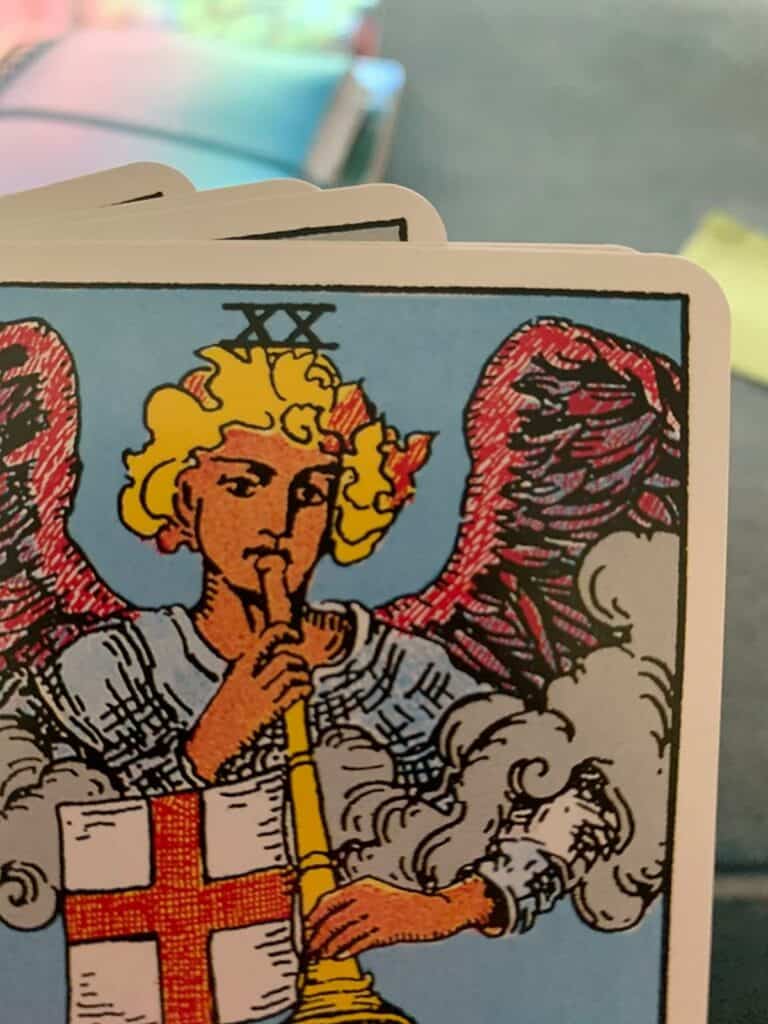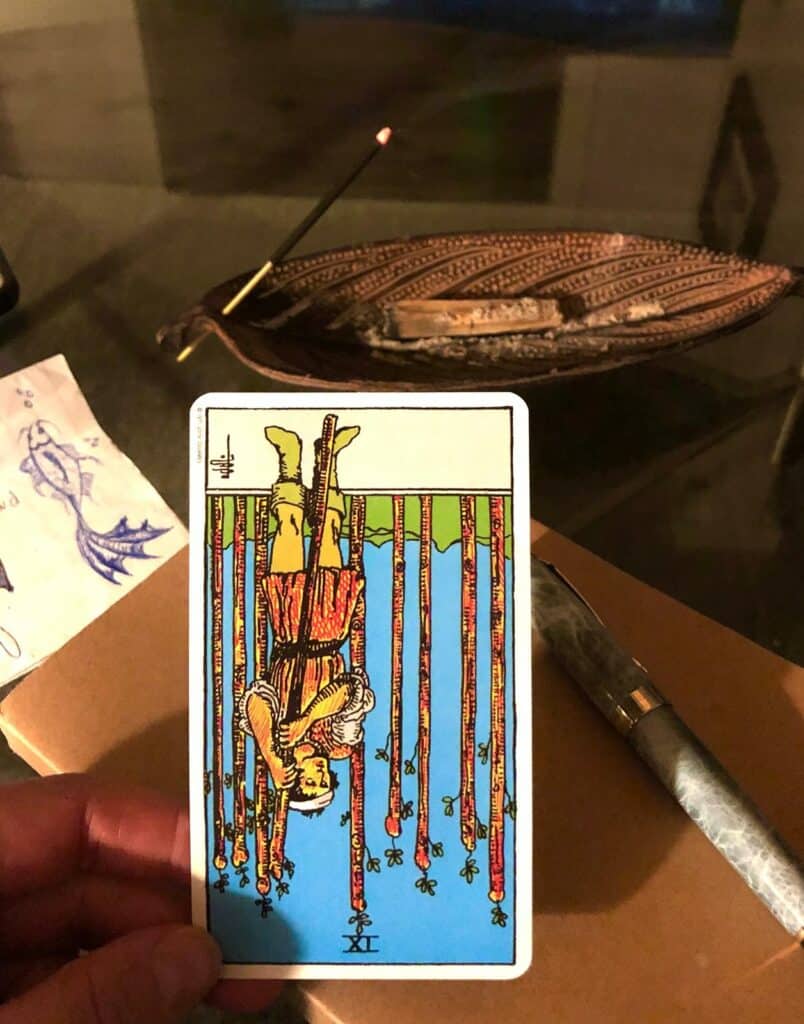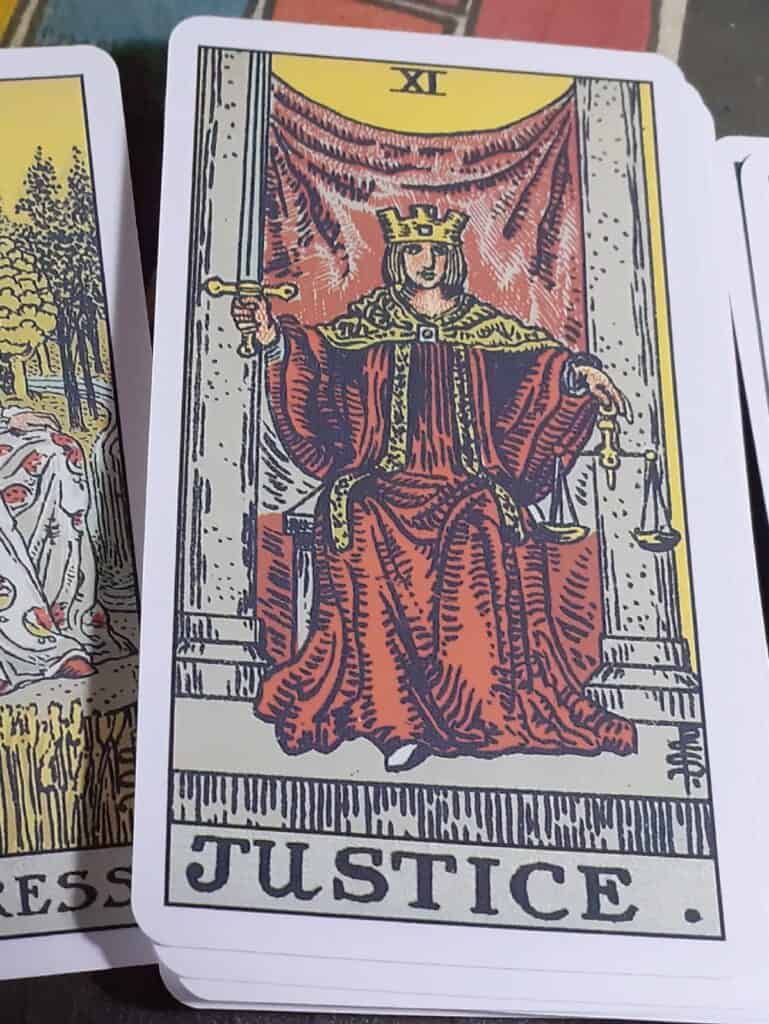
If you’re interested in tarot cards, you may be wondering about the different types of cards and their meanings. Understanding tarot cards can be a helpful tool for self-reflection and guidance. In this article, we’ll provide you with a comprehensive list of tarot cards and their meanings.
Tarot cards are a deck of 78 cards that are used for divination and spiritual guidance. The deck is divided into two categories: the Major Arcana and the Minor Arcana. The Major Arcana consists of 22 cards that represent significant life events and archetypes. The Minor Arcana consists of 56 cards that represent everyday events and experiences. Each card has its own unique meaning and symbolism.
Whether you’re a seasoned tarot reader or a beginner, having a list of tarot cards and their meanings can be a helpful reference. In the following sections, we’ll provide you with a breakdown of each card, including its name, number, and symbolism. With this information, you’ll be able to gain a deeper understanding of the tarot and use it as a tool for personal growth and insight.
Major Arcana
The Major Arcana is the first 22 cards in a standard Tarot deck, and they represent significant life events, lessons, and archetypes. Each card has its own unique meaning and symbolism that can help you gain insight into your life’s journey.
The Fool
The Fool is the first card in the Major Arcana, and it represents new beginnings, innocence, and spontaneity. The Fool is a reminder to take risks and trust in the journey ahead.
The Magician
The Magician is the second card in the Major Arcana, and it represents manifestation, creativity, and power. The Magician reminds you that you have the ability to create your reality and manifest your desires.
The High Priestess
The High Priestess is the third card in the Major Arcana, and it represents intuition, mystery, and hidden knowledge. The High Priestess reminds you to trust your inner voice and follow your intuition.
The Empress
The Empress is the fourth card in the Major Arcana, and it represents nurturing, abundance, and creativity. The Empress reminds you to take care of yourself and those around you and to embrace your creative side.
The Emperor
The Emperor is the fifth card in the Major Arcana, and it represents authority, structure, and leadership. The Emperor reminds you to take responsibility for your life and to create a solid foundation for yourself.
The Hierophant
The Hierophant is the sixth card in the Major Arcana, and it represents tradition, spirituality, and guidance. The Hierophant reminds you to seek guidance from those who have come before you and to honor your spiritual path.
The Lovers
The Lovers is the seventh card in the Major Arcana, and it represents love, relationships, and choices. The Lovers remind you to make choices that align with your heart and to nurture your relationships.
The Chariot
The Chariot is the eighth card in the Major Arcana, and it represents determination, willpower, and success. The Chariot reminds you to stay focused on your goals and to persevere through challenges.
Strength
Strength is the ninth card in the Major Arcana, and it represents inner strength, courage, and compassion. Strength reminds you to find your inner strength and to approach challenges with compassion and understanding.
The Hermit
The Hermit is the tenth card in the Major Arcana, and it represents introspection, solitude, and wisdom. The Hermit reminds you to take time for yourself and to reflect on your life’s journey.
Wheel of Fortune
The Wheel of Fortune is the eleventh card in the Major Arcana, and it represents change, cycles, and destiny. The Wheel of Fortune reminds you that life is full of ups and downs and that everything happens for a reason.
Justice
Justice is the twelfth card in the Major Arcana, and it represents balance, fairness, and truth. Justice reminds you to seek balance in your life and to approach situations with fairness and honesty.
The Hanged Man
The Hanged Man is the thirteenth card in the Major Arcana, and it represents surrender, letting go, and sacrifice. The Hanged Man reminds you to let go of what no longer serves you and to trust in the journey ahead.
Death
Death is the fourteenth card in the Major Arcana, and it represents transformation, change, and rebirth. Death reminds you that endings are necessary for new beginnings and that change is a natural part of life.
Temperance
Temperance is the fifteenth card in the Major Arcana, and it represents balance, harmony, and moderation. Temperance reminds you to find balance in all areas of your life and to approach situations with a calm and peaceful mind.
The Devil
The Devil is the sixteenth card in the Major Arcana, and it represents temptation, materialism, and addiction. The Devil reminds you to be aware of your vices and to avoid falling into negative patterns.
The Tower
The Tower is the seventeenth card in the Major Arcana, and it represents upheaval, chaos, and revelation. The Tower reminds you that sometimes life can be unpredictable and that it’s important to be adaptable and resilient.
The Star
The Star is the eighteenth card in the Major Arcana, and it represents hope, inspiration, and guidance. The Star reminds you to have faith in the journey ahead and to trust that everything will work out in the end.
The Moon
The Moon is the nineteenth card in the Major Arcana, and it represents intuition, mystery, and the subconscious. The Moon reminds you to trust your intuition and to explore the mysteries of your inner world.
The Sun
The Sun is the twentieth card in the Major Arcana, and it represents joy, success, and vitality. The Sun reminds you to embrace
Minor Arcana
The Minor Arcana is made up of 56 cards, divided into four suits: Wands, Cups, Swords, and Pentacles. Each suit contains 14 cards, including four court cards (Page, Knight, Queen, and King) and ten numbered cards (Ace through 10). The Minor Arcana represents the smaller, day-to-day events in our lives and can provide insight into how those events are affecting us.
Wands
The Suit of Wands represents creativity, inspiration, and passion. It is associated with the element of fire and symbolizes action and energy. The Wands cards often appear in Tarot readings about career, ambition, and personal growth. Here are the cards in the Suit of Wands:
| Card | Meaning |
|---|---|
| Ace of Wands | Inspiration, new beginnings |
| Two of Wands | Planning, decision-making |
| Three of Wands | Expansion, progress |
| Four of Wands | Celebration, happiness |
| Five of Wands | Conflict, competition |
| Six of Wands | Victory, recognition |
| Seven of Wands | Defensiveness, perseverance |
| Eight of Wands | Movement, travel |
| Nine of Wands | Resilience, determination |
| Ten of Wands | Burden, responsibility |
| Page of Wands | Enthusiasm, exploration |
| Knight of Wands | Adventure, impulsiveness |
| Queen of Wands | Confidence, leadership |
| King of Wands | Authority, passion |
Cups
The Suit of Cups represents emotions, relationships, and intuition. It is associated with the element of water and symbolizes our inner world. The Cups cards often appear in Tarot readings about love, friendship, and creativity. Here are the cards in the Suit of Cups:
| Card | Meaning |
|---|---|
| Ace of Cups | Love, new beginnings |
| Two of Cups | Connection, partnership |
| Three of Cups | Celebration, joy |
| Four of Cups | Discontent, apathy |
| Five of Cups | Loss, grief |
| Six of Cups | Nostalgia, childhood |
| Seven of Cups | Choices, illusion |
| Eight of Cups | Moving on, transition |
| Nine of Cups | Satisfaction, happiness |
| Ten of Cups | Harmony, family |
| Page of Cups | Creativity, intuition |
| Knight of Cups | Romance, charm |
| Queen of Cups | Empathy, nurturing |
| King of Cups | Emotional balance, maturity |
Swords
The Suit of Swords represents thoughts, communication, and intellect. It is associated with the element of air and symbolizes our mental state. The Swords cards often appear in Tarot readings about conflict, decision-making, and truth-seeking. Here are the cards in the Suit of Swords:
| Card | Meaning |
|---|---|
| Ace of Swords | Clarity, new ideas |
| Two of Swords | Indecision, stalemate |
| Three of Swords | Heartbreak, betrayal |
| Four of Swords | Rest, recuperation |
| Five of Swords | Defeat, loss |
| Six of Swords | Transition, moving on |
| Seven of Swords | Deception, trickery |
| Eight of Swords | Restriction, imprisonment |
| Nine of Swords | Anxiety, nightmares |
| Ten of Swords | Betrayal, endings |
| Page of Swords | Curiosity, skepticism |
| Knight of Swords | Ambition, determination |
| Queen of Swords | Independence, wisdom |
| King of Swords | Authority, truth-seeking |
Pentacles
The Suit of Pentacles represents material possessions, finances, and work. It is associated with the element of earth and symbolizes our physical world. The Pentacles cards often appear in Tarot readings about career, money, and practical matters. Here are the cards in the Suit of Pentacles:
| Card | Meaning |
|---|---|
| Ace of Pentacles | Wealth, new opportunities |
| Two of Pentacles | Balance, adaptability |
| Three of Pentacles | Collaboration, teamwork |
| Four of Pentacles | Possessiveness, materialism |
| Five of Pentacles | Hardship, poverty |
| Six of Pentacles | Generosity, charity |
| Seven of Pentacles | Patience, investment |
| Eight of Pentacles | Diligence, skill-building |
| Nine of Pentacles | Independence, self-sufficiency |
| Ten of Pentacles | Legacy, abundance |
| Page of Pentacles | Ambition, curiosity |
| Knight of Pentacles | Hard work, reliability |
| Queen of Pentacles | Practicality, nurturing |
| King of Pentacles | Wealth, success |
Understanding Tarot Card Meanings
Tarot cards are a powerful tool for gaining insights into your life and the world around you. Each card in the deck has its own unique meaning, and understanding these meanings is essential to unlocking the full potential of the Tarot.
Here are some key things to keep in mind when interpreting Tarot card meanings:
- Context is key: The meaning of a Tarot card can vary depending on the question being asked, the position of the card in the spread, and other factors. Always consider the context when interpreting a card.
- Trust your intuition: While it’s important to understand the traditional meanings of Tarot cards, it’s also important to trust your own intuition and instincts. Sometimes a card may have a different meaning for you than it does in the traditional interpretation.
- Pay attention to symbolism: Tarot cards are full of symbolism, and each symbol can add layers of meaning to a card’s interpretation. Pay attention to the symbols on each card and think about what they might represent.
- Consider the card’s energy: Each Tarot card has its own unique energy or vibe. Some cards may feel more positive or negative than others, and this can influence their meaning in a reading.
- Don’t be afraid of reversals: Reversed Tarot cards (cards that appear upside down in a reading) can indicate blockages, challenges, or other obstacles. Don’t be afraid to explore the meaning of reversed cards, as they can provide valuable insights into your situation.
By keeping these tips in mind, you can gain a deeper understanding of Tarot card meanings and unlock the full potential of the Tarot.
How to Use Tarot Cards
Using tarot cards can be an exciting and insightful experience. Here are some tips on how to use tarot cards effectively:
1. Choose the Right Deck
Choosing the right deck is crucial as it sets the tone for your readings. There are many different types of decks available, each with their own unique artwork and symbolism. Take the time to research and find a deck that resonates with you.
2. Set the Mood
Before you begin your reading, it’s important to set the mood. Find a quiet and comfortable space where you won’t be disturbed. You can also light candles or incense to create a relaxing atmosphere.
3. Shuffle the Cards
Shuffling the cards is an important step as it helps to clear your mind and focus your energy. There are many different ways to shuffle the cards, including overhand shuffling, riffle shuffling, and cutting the deck.
4. Ask a Question
Once you have shuffled the cards, take a moment to focus on your question. It’s important to ask open-ended questions that allow for a range of answers. Avoid asking yes or no questions as they can limit the scope of the reading.
5. Draw Cards
Draw the cards and lay them out in a spread that works best for you. There are many different types of spreads, including the Celtic Cross, Three-Card Spread, and One-Card Spread. Take your time to interpret the cards and their meanings.
6. Reflect on the Reading
After your reading, take some time to reflect on the cards and their meanings. Consider how they relate to your question and your life. Remember that tarot readings are not set in stone and can change based on your actions and decisions.
By following these tips, you can use tarot cards to gain insight and clarity into your life.
Choosing Your Tarot Deck
Choosing the right tarot deck is an important step in your journey as a practitioner. With hundreds of tarot decks available in the market, it can be overwhelming to choose one that resonates with you. Here are some tips to help you choose the perfect tarot deck for your needs:
Consider the Artwork
Tarot decks come in different styles and designs. Some decks have traditional artwork, while others have modern interpretations. You should choose a deck whose artwork speaks to you and makes you feel comfortable. If you’re not sure what style you prefer, you can browse through different decks online or in a store to get an idea of what you like.
Look for a Deck with Clear Symbolism
Each tarot deck has its own unique symbolism. It’s essential to choose a deck with symbolism that you can easily understand and interpret. A deck with clear symbolism will make it easier for you to connect with the cards and get accurate readings.
Consider the Deck’s Energy
Every tarot deck has its own energy or vibe. Some decks have a lighter, more positive energy, while others have a darker, more intense energy. You should choose a deck that resonates with you and matches the energy you want to work with. If you’re not sure what energy you prefer, you can read reviews of different decks to get an idea of what other people have experienced.
Choose a Deck That Fits Your Reading Style
Different tarot decks are suited for different reading styles. Some decks are better for general readings, while others are more focused on specific topics such as love, career, or spirituality. You should choose a deck that fits your reading style and the type of readings you want to do.
Consider the Deck’s Size and Accessibility
Tarot decks come in different sizes, from standard to pocket-sized. If you plan on carrying your deck with you, you may want to choose a smaller size that’s easier to transport. You should also consider the accessibility of the deck. Some decks have complex artwork or small text that may make it difficult to read for some people.
By considering these factors, you’ll be able to choose a tarot deck that resonates with you and helps you get accurate readings. Remember, there’s no right or wrong deck to choose. It’s all about finding the deck that speaks to you and matches your unique needs as a practitioner.
Frequently Asked Questions
What are the Major Arcana cards in Tarot?
The Major Arcana Tarot cards are a set of 22 cards that represent significant life events, archetypes, and universal themes. These cards include The Fool, The Magician, The High Priestess, The Empress, The Emperor, The Hierophant, The Lovers, The Chariot, Strength, The Hermit, Wheel of Fortune, Justice, The Hanged Man, Death, Temperance, The Devil, The Tower, The Star, The Moon, The Sun, Judgement, and The World.
What is the meaning behind the Minor Arcana Tarot cards?
The Minor Arcana Tarot cards are divided into four suits: Wands, Cups, Swords, and Pentacles. Each suit has 14 cards, including Ace through 10, and four court cards: Page, Knight, Queen, and King. These cards represent the day-to-day events in our lives, and they provide insight into our emotions, thoughts, and actions.
How many Tarot cards are there in a deck?
A standard Tarot deck has 78 cards, including 22 Major Arcana cards and 56 Minor Arcana cards.
What are the names of the 12 main Tarot cards?
There are 22 Major Arcana cards in Tarot, and each of them has a unique name. Some of the most well-known Major Arcana cards include The Fool, The Magician, The High Priestess, The Empress, The Emperor, The Hierophant, The Lovers, The Chariot, Strength, The Hermit, Wheel of Fortune, Justice, The Hanged Man, Death, Temperance, The Devil, The Tower, The Star, The Moon, The Sun, Judgement, and The World.
What is the difference between the Major and Minor Arcana Tarot cards?
The Major Arcana Tarot cards represent significant life events and universal themes, while the Minor Arcana Tarot cards represent day-to-day events and provide insight into our emotions, thoughts, and actions.
What are the 78 types of Tarot cards and their meanings?
The 78 types of Tarot cards are divided into the Major Arcana and Minor Arcana. Each card has its own unique meaning and interpretation, and the best way to understand them is to study and practice using them regularly.



